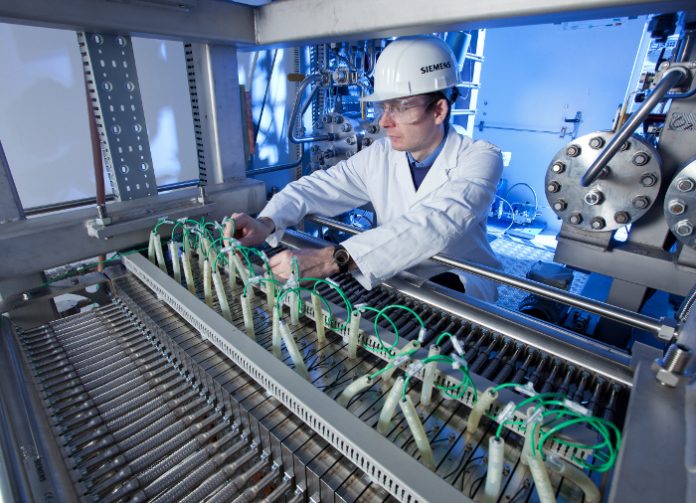Solar and wind assets will need to be developed at double the current pace and energy storage deployment needs to pick up by two-thirds.
That is the gist of the latest publication from business intelligence company BloombergNEF, co-written by renewables developer Statkraft and clean energy distributor Eaton. The report, Sector Coupling in Europe: Powering Decarbonization, examines the effects of sector coupling at scale across Europe and its implications on the electricity system and market design.
With the EU’s European Green Deal and accompanying climate law, the bloc is set for more ambitious carbon emission reductions. The latest proposal seeks to cut carbon emission 55% by 2030, compared to a 1990 baseline scenario. The electrification of transportation; space heating and cooling; and industrial processes could dramatically reduce emissions.
Sector coupling
Sector coupling across those three areas could drive carbon emission reductions of 71% by 2050 – 83% if power is included. Examples of sector coupling could include heat pumps being used to cool data centers or heat generated by the industry being used to warm nearby homes.
“In particular, by 2030, the coupled sectors, together with electricity, could cut emissions to 63% below 1990 levels compared with the EU-legislated target of 40%,” the report states. “By 2050, this reduction would extend to 83% below 1990 levels.
The report’s authors examined the U.K. and Germany, as northern European archetypes. By 2050, the generation mix in those two countries will be almost entirely carbon-free, according to the study. Combined with sector coupling, that could mean emission reductions of 60% from transport, buildings and industry between now and mid century, or 71% on 1990 levels.
Sector coupling would also entail the electrification of more sectors raising gross electricity consumption 75% up to 2050, meaning a boom for solar and wind capacity.
Green hydrogen
Electricity, whether supplied directly from generation or stored using green hydrogen, could meet 50-60% of power demand from coupled sectors, up from 10% today. Such a scenario would see fossil fuel power fall from today’s 80% share of the mix to 23%.
To hit those targets, the EU would need to raise electricity generation capacity 75% by nearly doubling volumes of solar and wind capacity, a move which would require generation and battery storage spending to rise two-thirds from 2018 to mid century.
Though economy-wide emissions would fall, the BloombergNEF report warned electricity sector emissions could rise because of a need for gas peaking facilities to back-up a grid powered by increasing volumes of intermittent generation from renewables. That is a contentious point given the numerous studies which have claimed an energy mix entirely free of fossil fuels – without natural gas – would be possible thanks to energy storage options such as pumped hydro and batteries.
Natural gas
BloombergNEF’s analysts point out deeper sector coupling will steepen seasonal changes in the electricity grid load profile and on the intraday-trading energy market and say that will drive a need for gas peaker plants to keep the lights on.
“The scale of the challenge for the power system depends on the uptake of the new sources of demand-side flexibility created by sector coupling,” states the report. “The potential new sources of flexibility include dynamic EV [electric vehicle] chargers, and electric heating signals that respond to pricing signals, virtual power plants and industrial demand-response – if the right enabling policies and technologies are in place.”
New energy market models and increased demand flexibility could reduce the amount of investment needed for new electricity generation and storage capacity, according to the study.
Buildings lead the way
If governments across Europe are starting to subsidize electric passenger transport, BloombergNEF is less optimistic about aviation and shipping. The brightest hope for sector coupling up to 2050 is likely to come from electrification in the building sector, states the report.
In industry, low-temperature processes such as food and drink are expected to be among the first to electrify, with steel, cement and other high-temperature, energy-intensive businesses trailing behind.
Looking further ahead, the report’s authors call for policymakers to ensure the availability and uptake of flexible electricity tariffs to minimize net peak demand and again cite the importance of demand-side flexibility.
“Priority should also be given to the standardization and interoperability of the smart systems that are rolled out with sector coupling to provide the billing infrastructure for these tariffs,” adds the study.






